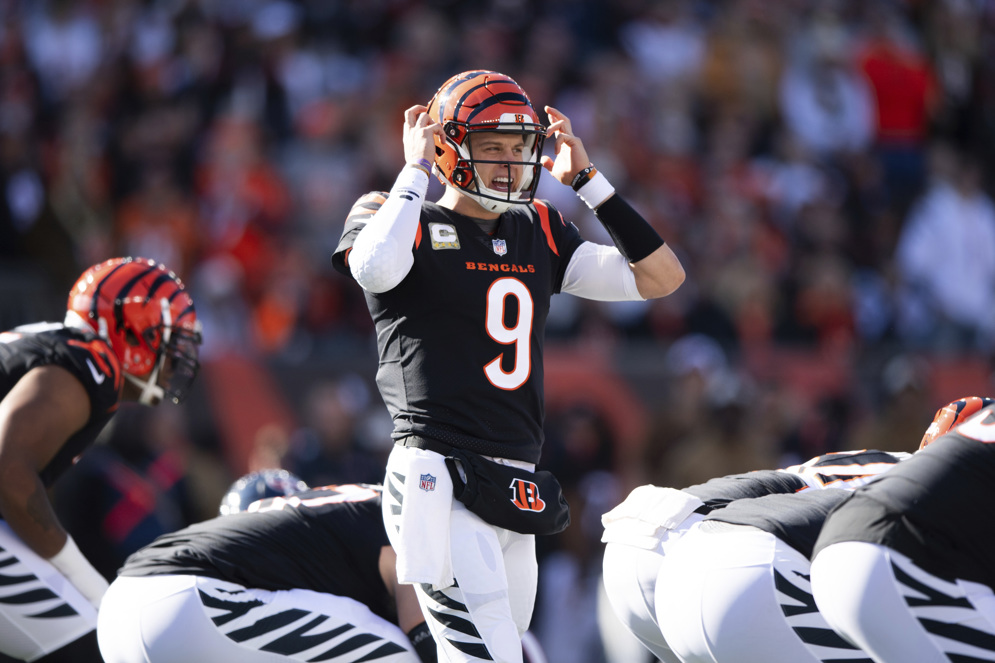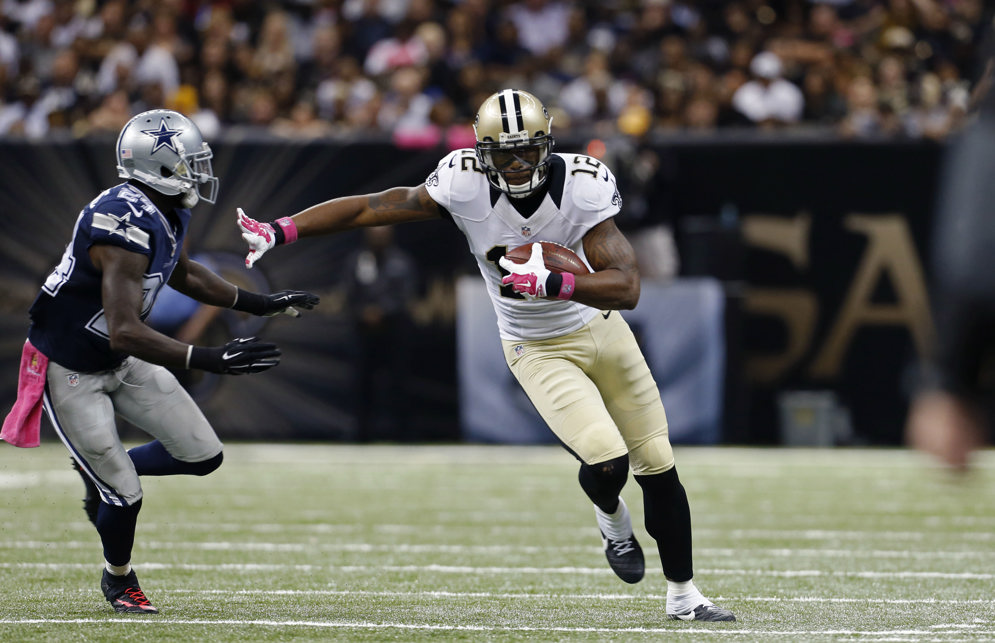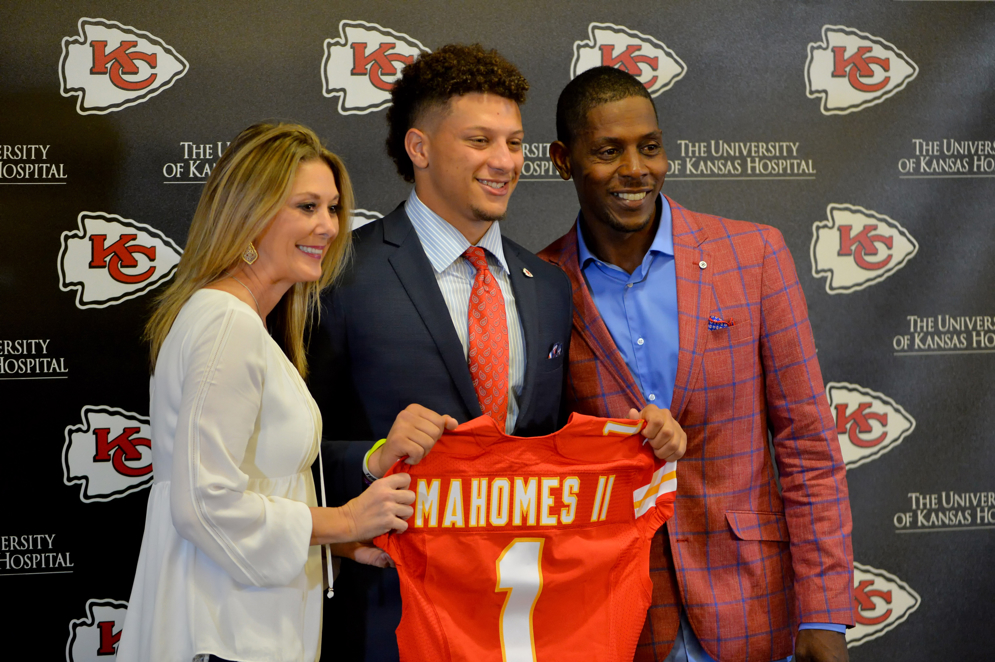The Rules of the Draft
Which team will go first? How long does each team have to make its pick? Who is eligible to be drafted? The NFL has specific rules for each part of the draft process.
Which team will go first? How long does each team have to make its pick? Who is eligible to be drafted? The NFL has specific rules for each part of the draft process.

Joe Burrow was selected in the first round with the first overall pick of the 2020 NFL Draft. (AP/Emilee Chinn)
Bart Starr, Deacon Jones, Terrell Davis and Tom Brady also have at least two things in common: They too are among the league’s biggest stars, and they were selected in late rounds of the NFL Draft — Starr in the 17th, Jones in the 14th, and Davis and Brady in the sixth.
The annual NFL Draft gives the teams the opportunity to infuse their rosters with new talent. Some players will provide an instant boost to the team that selects them; others won’t. But the chance that drafted players will lead their new clubs to glory makes teams compete over talent, whether in the first round or the last.
The NFL Draft has changed as the league has grown in size and popularity. Competition for star players, both external (between the NFL and upstart leagues) and internal (among the league’s clubs), has led the league to regularly alter the draft and implement new rules and regulations to maintain fairness.
How is it determined which team will go first, how long each team has to make its pick, and who is eligible to be drafted? The NFL has specific rules for each part of the draft process.

Currently, each of the 32 clubs receives one pick in each of the seven rounds of the NFL Draft (the number of teams drafting has changed over time, and there have been as many as 30 rounds in a single draft).
The order of selection is determined by the reverse order of finish in the previous season. Barring any trades between clubs, each round starts with the team that finished with the worst record and ends with the Super Bowl champions.
Teams that didn’t qualify for the playoffs are assigned draft slots 1-20. The order is determined by the standings at the end of the regular season: The club with the worst record will pick first, and the one with the best record will pick 20th.
Teams that did qualify for the playoffs are assigned draft slots 21-32. The order is determined by the results of the previous year’s postseason play:
In situations where teams finished the previous season with identical records, the determination of draft position is decided by strength of schedule — the aggregate winning percentage of a team’s opponents. The team that played the schedule with the lowest winning percentage will be awarded the higher pick.
If the teams have the same strength of schedule, division or conference tiebreakers are applied. If the divisional or conference tiebreakers are not applicable, or ties still exist between teams of different conferences, ties will be broken the following tie-breaking method:

The New Orleans Saints selected Marques Colston with a compensatory pick in the seventh round of the 2006 NFL Draft. (AP Photo/Jonathan Bachman)
Under the terms of the NFL’s collective bargaining agreement, the league also can assign as many as 32 additional “compensatory free agent” picks, which allow clubs that have lost free agents to another team to use the draft to try to fill the void. The awarded picks take place at the end of the third through seventh round.
Compensatory free agents are determined by a proprietary formula, developed by the NFL Management Council, which considers a player’s salary, playing time and postseason honors.
The value of the compensatory free agents gained or lost by each team is totaled, and a team is awarded picks of equal value to the net loss of compensatory free agents, up to a maximum of four.
The NFL Draft takes place over three days (Thursday through Saturday) each spring.
Only the first round is held on Thursday. It starts at 8 p.m. Eastern time, and each team has 10 minutes to make its pick. The second and third rounds are on Friday; rounds 4-7 are on Saturday. Teams get seven minutes to make picks in the second round, five minutes for regular or compensatory picks in rounds 3-6 and four minutes in round 7. If a team lets its time expire without making a choice, it can make a selection later — but it runs the risk of letting the next team on the clock take the player it was considering.
Every team has a table set up at the draft venue, where team representatives stay in constant contact with executives at each club’s headquarters. When a team decides on a selection, it communicates the player’s name from its draft room to its representatives at Selection Square. The team representative then writes the player’s name, position and school on a card and submits it to an NFL staff member known as a runner.
When the runner gets the card, the selection is official, and the draft clock is reset for the next pick. A second runner goes to the representatives of the team up next and lets them know who was chosen.
Upon receiving the card, the first runner immediately radios the selection to a NFL Player Personnel representative, who inputs the player’s name into a database that notifies all clubs of the pick. The runner also walks the card to the head table, where it’s given to Ken Fiore, vice president of player personnel.
Fiore reviews the name for accuracy and records the pick. He then shares the name with the NFL’s broadcast partners, the commissioner and other league or team representatives so they can announce the pick.

The Kansas City Chiefs traded a total of three draft picks in 2017 to the Buffalo Bills to get Patrick Mahomes II, a 2x Super Bowl MVP. (AP Photo/Suzanne Plunkett)
Once teams are assigned their draft positions, each pick is an asset: It’s up to the club’s executives to either select a player or trade the pick to another team to improve its position in the current or future drafts. Teams may negotiate trades at any time before and during the draft and can swap draft picks or current NFL players to whom they hold the rights.
When teams agree to a trade during the draft, both clubs call the head table, where Fiore and staff monitor the league’s phones. Each team must relay the same trade information to the league to have a trade approved.
Once a trade is approved, a Player Personnel representative gives the details to the league’s broadcast partners and to all 32 clubs. A league official announces the trade in the draft venue for media and fans.
To be eligible for the draft, players must have been out of high school for at least three years and must have used up their college eligibility before the start of the next college football season. Underclassmen and players who have graduated before using all their college eligibility may request the league’s approval to enter the draft early.
Players are draft-eligible only in the year after the end of their college eligibility.
Before the draft, NFL Player Personnel staff members confirm the eligibility of draft prospects; that means researching the college backgrounds of approximately 3,000 college players each year. They work with NCAA compliance departments at schools across the country to verify the information for all prospects. They also check the rosters of college all-star games to make sure that only draft-eligible players play in the games.
The Player Personnel staff also review all of the applications submitted by players who want to enter the draft early. Underclassmen have until seven days following the NCAA National Championship Game to declare their intentions to do so. For the 2017 NFL Draft, 106 undergraduates received NFL approval to enter the draft, as did 13 players who graduated without using up all their college eligibility.
Once players have become draft-eligible or have declared their intention to enter the draft early, the Player Personnel staff work with teams, agents and schools to clarify the players’ status. They also work with agents, schools, scouts and teams to enforce league rules for Pro Days (where NFL scouts come to colleges to observe prospects) and private workouts.
During the draft, Player Personnel staff confirm that all players who are drafted are draft-eligible.